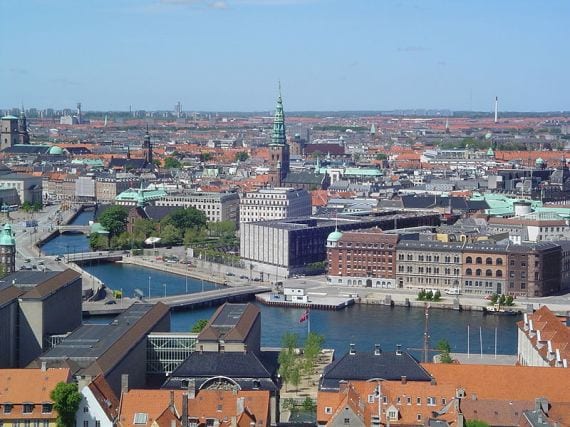The cheapest form of new electricity in Denmark will be onshore wind power when new turbines become operational in 2016, according to a new analysis by the country’s government. The price has been estimated to be about one half of what coal and natural gas cost.
Of course, if onshore wind power can be the cheapest form of new electricity, this fact dispenses the notion that coal and natural gas are to remain long-term energy producers by default. The primary argument for keeping them seems to have been their low financial cost.
Rasmus Petersen, Danish Minister for Energy, Climate and Buildings said: “Wind power today is cheaper than other forms of energy, not least because of a big commitment and professionalism in the field. This is true both for researchers, companies and politicians.” Denmark wants to be fossil-fuel free by 2050. Wind power in Denmark accounts for about 28% of the country’s electricity.
Coal, we know, has some serious disadvantages, like how much it contributes to climate change and hazardous emissions that contribute to air pollution and associated illness and mortality. The study didn’t factor in the environmental benefits of not burning coal — “the analysis was not based on a full cost-benefit assessment of different technologies that included an assessment of environmental benefits, taxes or subsidies.”
A Harvard Medical School study attempted to calculate the costs to American society of burning coal and estimated that number is about $500 billion every year. So, renewable energy is often compared to fossil fuels in an unfair way, because the advantages are too often overlooked.
If financial costs are becoming less and less of a barrier, then there appears to be less argumentative ground to stand on for the opponents.
Consider that the Danish Energy Authority, in May of 2014, released a statement declaring that a fossil-fuel-free energy system was possible. “It is technically possible to construct an energy system which is not based on coal, oil and natural gas. This has been confirmed in a report issued by the Danish Energy Agency entitled ‘Energiscenarier for 2020, 2035 og 2050′ (Energy Scenarios for 2020, 2035 and 2050), which calculates the additional costs of an energy supply independent of fossil fuels at between DKK 6 and 29 bn. in 2050, depending on the choice of green energy system.”
There is a fascinating trend taking place as individual nations take steps to become energy independent. If you consider how much international conflict there has been over natural resources , will there be some geopolitical ripple effects created by Denmark becoming fossil-fuel free?
Another trend, but more minor, is green tourism, which has become quite popular in Germany. I wonder how many people head to Denmark to visit its wind turbines, and how many of the Danish take recreational trips to wind farms.
Source: CleanTechnica. Reproduced with permission.











